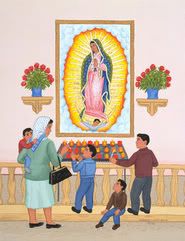To set the preparatory character of Advent (
General Norms for the Liturgical Year and the Calendar, 39) apart from the more penitential character of Lent
(GNLYC, 27)
, you might consider celebrating a penitential service in addition to, or instead of, your sacramental communal reconciliation liturgy.
“Penitential services are gatherings of the people of God to hear God’s word as an invitiation to conversion and renewal of life and as the message of our liberation from sin through Christ’s death and resurrection” (
Rite of Penance, 36).
If you decide to do a penitential service, remember that “[c]are must be taken to ensure that the faithful do not confuse these celebrations with the celebration of the sacrament of penance. Penitential services are very helpful in promoting conversion of life and purifcation of heart” (
Rite of Penance, 37). Further, “[i]t is desirable to arrange them especially for these purposes:
- to foster the spirit of penance within the Christian community;
- to help the faithful to prepare for individual confession that can be made later at a convenient time;
- to help children gradually form their conscience about sin in human life and about freedom from sing through Christ;
- to help catechumens during their conversion” (Rite of Penance, 37).
Below is a script for an Advent penitential liturgy prepared by Diana Macalintal. Because the liturgy uses much Marian imagery, especially the Magnificat, it would be appropriate to use this liturgy especially during the final week of Advent (December 17 to 24) when the Church focuses it attention to Mary and Joseph. Please feel free to copy, adapt, and use the text free of charge for your own parishes.
Download a Word file of this liturgy here.
Advent Penitential Prayer Service
© 2005, 2006, Diana Macalintal
Items needed:
- Lectionary
- Binder with intercessions on ambo
- Presider’s script and binder
- Candle and stand
- Matches
- Worship aids
- Presider’s chair / cantor’s chair
- Singing bowl and mallet
Ministers needed:- Presider
- Cantor
- Lector
- 2 Readers
GATHERING(all stand)Call to WorshipCantor rings singing bowl.Introductory Dialogue PRESIDER:
God, come to my assistance (+)…
ASSEMBLY:
Lord, make haste to help me.
Glory to the Father, and to the Son, and to the Holy Spirit:
As it was in the beginning is now and will be forever. Amen. Alleluia.
Hymnany appropriate Advent or Marian hymnOpening Prayer PRESIDER:
Let us pray.
[silence] Gracious and merciful God, your love for us knows no bounds.
Open our eyes as we come before you now,
that we may see ourselves as you see us.
Give us wisdom that we may recognize our need for your forgiveness.
And grant us courage that we may forgive others as you forgive us.
May our lives always be a sign of your reconciling peace.
We make our prayer through Christ our Lord. Amen.
(all sit) LITURGY OF THE WORD Reading1 John 1:1, 5-7, 2:1
or another appropriate Advent readingSilenceat least one minute of silence is observedResponseany appropriate psalm or hymnPENITENCE (remain seated) Examination of Conscience PRESIDER:
Dear friends, with faith in God’s mercy,
let us lay bare our hearts to the Word,
and let it pierce us that we may ever be changed by it.
READER 1:
Most blessed are you among women, and blessed is the fruit of your womb. [pause]
Have we greeted one another with curses instead of blessings?
Have we borne bitter fruit in our thoughts, words, and deeds? [pause]
Holy Mary...
ALL: Mother of God, pray for us sinners, now and at the hour of our death.
READER 2:
And how does this happen to me that the mother of my Lord should come to me? [pause]
Have we denied our own worth or the worth of others, disbelieving that God is present in ourselves or in others?
Have we missed the presence of God because we are too busy, too hurried, or too anxious? [pause]
Holy Mary...
ALL: Mother of God, pray for us sinners, now and at the hour of our death.
READER 1:
For at the moment the sound of your greeting reached my ears, the infant in my womb leaped for joy. [pause]
Have we closed our ears to the sound of God’s voice coming from unexpected people, places, and encounters?
Have we grown so serious that we cannot leap for joy? [pause]
Holy Mary...
ALL: Mother of God, pray for us sinners, now and at the hour of our death.
READER 2:
Blessed are you who believed that what was spoken to you by the Lord would be fulfilled. [pause]
Have we lost hope and faith in each other, in ourselves, in our church, in our world, in our communities?
Do we prevent the Word from being fulfilled by our apathy, passive-aggressiveness, despair, or complacency? [pause]
Holy Mary...
ALL: Mother of God, pray for us sinners, now and at the hour of our death.
READER 1:
My soul proclaims the greatness of the Lord; my spirit rejoices in God my savior. [pause]
Does my very being, my very presence preach the goodness of God?
Do I sing, dance, play, and rejoice with others as often as I can? [pause]
Holy Mary...
ALL: Mother of God, pray for us sinners, now and at the hour of our death.
READER 2:
For he has looked upon his handmaid’s lowliness; behold, from now on will all ages call me blessed. [pause]
Who have we looked down upon because of their particular spirituality, lifestyle, political party, educational background, or economic wealth or poverty?
How has our need to help the lowly dominated their need to know the dignity of helping themselves? [pause]
Holy Mary...
ALL: Mother of God, pray for us sinners, now and at the hour of our death.
READER 1:
The Mighty One has done great things for me, and holy is his name. [pause]
When have we taken credit for what we have not done?
When have we denied our own participation in the evil that our communities, church, families, countries, or other associations have done? [pause]
Holy Mary...
ALL: Mother of God, pray for us sinners, now and at the hour of our death.
READER 2:
His mercy is from age to age to those who fear him. [pause]
Have we lost our sense of mercy and compassion so that nothing ever angers or sickens us?
Have we lost our sense of fear, awe, and reverence that nothing ever moves us at our core? [pause]
Holy Mary...
ALL: Mother of God, pray for us sinners, now and at the hour of our death.
READER 1:
He has shown might with his arm, dispersed the arrogant of mind and heart. [pause]
Have we been secretly arrogant?
Have we used our own power, status, education, or religion to put others down, even in the silence of our hearts? [pause]
Holy Mary...
ALL: Mother of God, pray for us sinners, now and at the hour of our death.
READER 2:
He has thrown down the rulers from their thrones but lifted up the lowly. [pause]
Have we done all we can to participate in and influence the political life of our cities, states, and nations?
Have we been afraid to be prophetic and revolutionary even at the cost of our own comfort? [pause]
Holy Mary...
ALL: Mother of God, pray for us sinners, now and at the hour of our death.
READER 1:
The hungry he has filled with good things; the rich he has sent away empty. [pause]
Have we become gluttonous for praise, solitude, piety, or the safety of those who are like us?
Who have we sent away empty, without our acknowledgment, thanks, care, or gratitude? [pause]
Holy Mary...
ALL: Mother of God, pray for us sinners, now and at the hour of our death.
READER 2:
He has helped Israel his servant, remembering his mercy, according to his promise to our ancestors, to Abraham and to his descendants forever. [pause]
Have we refused to give help and mercy?
Have we broken our promises?
Will we leave this world a more merciful, just, and beautiful place for our descendants? [pause]
Holy Mary...
ALL: Mother of God, pray for us sinners, now and at the hour of our death.
(all stand) Confession PRESIDER:
Let us stand and place a hand on the shoulder of those next to us,
and let us bow our heads and pray.
ALL: I confess to almighty God…
Lord’s Prayer PRESIDER:
Let us pray for forgiveness in the words that Jesus taught us.
ALL: Our Father…
Song of Praise PRESIDER: Together let us give thanks to the God.
A setting of the Magnificat is sung by the entire assembly.Closing Prayer PRESIDER:
Gracious and loving God,
you show us mercy and make us a new creation in the image of your Son.
Make us living signs of your love to all those we meet.
We ask this through Christ our Lord. Amen.
Closing Blessing PRESIDER:
a lay minister concludes the rite by signing himself or herself with the sign of the cross and saying:May God bless us and keep us. (+) Amen.
May God smile upon us and be gracious to us. Amen.
May God look upon us kindly, and give us peace. Amen.
 In case you weren't listening to Sam and Lissa on
In case you weren't listening to Sam and Lissa on 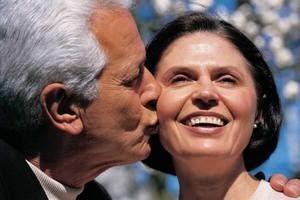

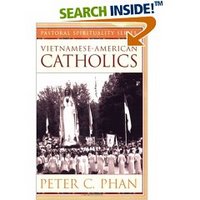
 The Dogma of the Immaculate Conception of Our Lady is only 151 years old. This teaching professes that from the moment of Mary’s conception, she was free from original sin, preparing her to become the Mother of God, the “God-Bearer” or Theotokos. (Don't forget that the Immaculate Conception is about Mary being conceived from the union of her parents, Anna and Joachim.)
The Dogma of the Immaculate Conception of Our Lady is only 151 years old. This teaching professes that from the moment of Mary’s conception, she was free from original sin, preparing her to become the Mother of God, the “God-Bearer” or Theotokos. (Don't forget that the Immaculate Conception is about Mary being conceived from the union of her parents, Anna and Joachim.) The Season of Advent has a twofold character, a double meaning. Advent prepares us for Christmas, the celebration of Christ’s first coming to us, and it also reminds us to direct our minds and hearts to be prepared for Christ’s second coming at the end of time. In Christian usage the word “advent” (adventus) has a special liturgical significance, but the origin of the word is pagan.
The Season of Advent has a twofold character, a double meaning. Advent prepares us for Christmas, the celebration of Christ’s first coming to us, and it also reminds us to direct our minds and hearts to be prepared for Christ’s second coming at the end of time. In Christian usage the word “advent” (adventus) has a special liturgical significance, but the origin of the word is pagan. De-Clutter your church
De-Clutter your church The primary purpose of the sanctuary area is for the presidency of the assembly’s worship, the proclamation of God’s Word, and the celebration of the Eucharist. Therefore, the primary objects in this area are the altar, the ambo, and the presider’s chair. Everything else is secondary.
The primary purpose of the sanctuary area is for the presidency of the assembly’s worship, the proclamation of God’s Word, and the celebration of the Eucharist. Therefore, the primary objects in this area are the altar, the ambo, and the presider’s chair. Everything else is secondary.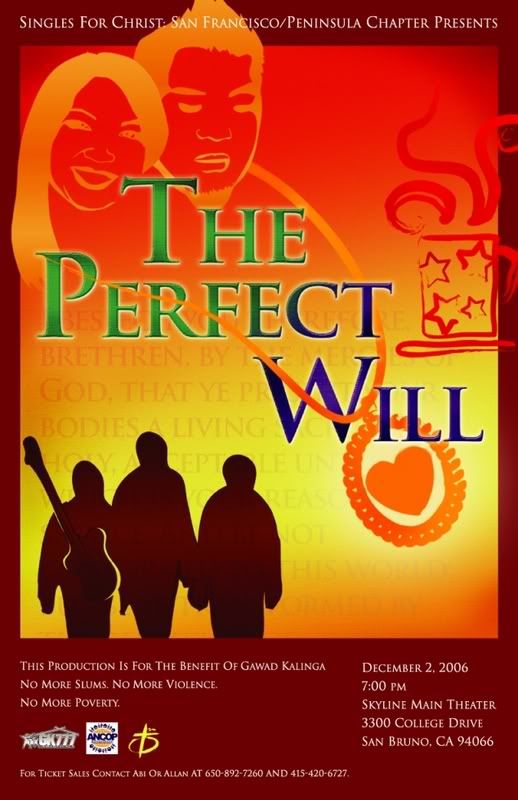
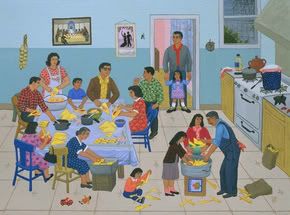
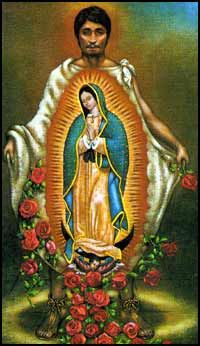 Every year, the diocese celebrates the feast of Our Lady of Guadalupe with processions and evening prayer in Spanish.
Every year, the diocese celebrates the feast of Our Lady of Guadalupe with processions and evening prayer in Spanish.